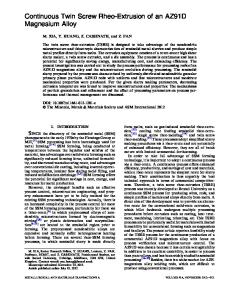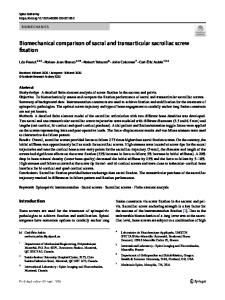Comparison of a twin interlocking derotation and compression screw cephalomedullary nail (InterTAN) with a single screw
- PDF / 1,894,015 Bytes
- 10 Pages / 595.276 x 790.866 pts Page_size
- 39 Downloads / 284 Views
REVIEW
Open Access
Comparison of a twin interlocking derotation and compression screw cephalomedullary nail (InterTAN) with a single screw derotation cephalomedullary nail (proximal femoral nail antirotation): a systematic review and meta-analysis for intertrochanteric fractures Leo Nherera1*, Paul Trueman1, Alan Horner1, Tracy Watson2 and Alan J. Johnstone3
Abstract Background: Intertrochanteric hip fractures are common and devastating injuries especially for the elderly. Surgical treatment is the optimal strategy for managing intertrochanteric fractures as it allows early rehabilitation and functional recovery. The relative effects of internal fixation strategies for intertrochanteric fracture after operation remain limited to relatively small studies which create uncertainty in attempts to establish evidence-based best practice. Methods: We conducted a systematic review and meta-analysis of randomised controlled trials (RCTs) and observational studies to assess the clinical effectiveness of two commonly used intramedullary devices: a twin screw integrated cephalomedullary nail (InterTAN) versus a single screw cephalomedullary nail (proximal femoral nail antirotation) in patients with intertrochanteric fractures. The following outcomes were considered: revisions, implant-related failures, non-unions, pain, Harris Hip Score and intraoperative outcomes. Odds ratios or mean differences with 95% confidence intervals in brackets are reported. Results: Six studies met the inclusion criteria, two randomised controlled trials and four observational studies enrolling 970 patients with mean age of 77 years, and 64% of patients were female. There was a statistically significant difference (p value < 0.05) for revisions OR 0.27 (0.13 to 0.56), implant-related failures OR 0.16 (0.09 to 0.27) and proportion of patients complaining of pain OR 0.50 (0.34 to 0.74). There was no difference in non-unions and Harris Hip Score (p value > 0.05). There was a significant difference in blood loss and fluoroscopy usage in favour of PFNA, whilst no difference in operating times were observed between the two devices. (Continued on next page)
* Correspondence: [email protected] 1 Smith & Nephew Advanced Wound Management, Hull, UK Full list of author information is available at the end of the article
© The Author(s). 2018 Open Access This article is distributed under the terms of the Creative Commons Attribution 4.0 International License (http://creativecommons.org/licenses/by/4.0/), which permits unrestricted use, distribution, and reproduction in any medium, provided you give appropriate credit to the original author(s) and the source, provide a link to the Creative Commons license, and indicate if changes were made. The Creative Commons Public Domain Dedication waiver (http://creativecommons.org/publicdomain/zero/1.0/) applies to the data made available in this article, unless otherwise stated.
Nherera et al. Journal of Orthopaedic Surgery and Research (2018) 13:46
Page 2 of 10
(Continued from previous page)
Conclusion
Data Loading...











